The mud was so thick and so deep that it swallowed men alive.
Rats the size of housecats feasted on the dead.
The Battle of Flers-Courcelette was a vision of hell.
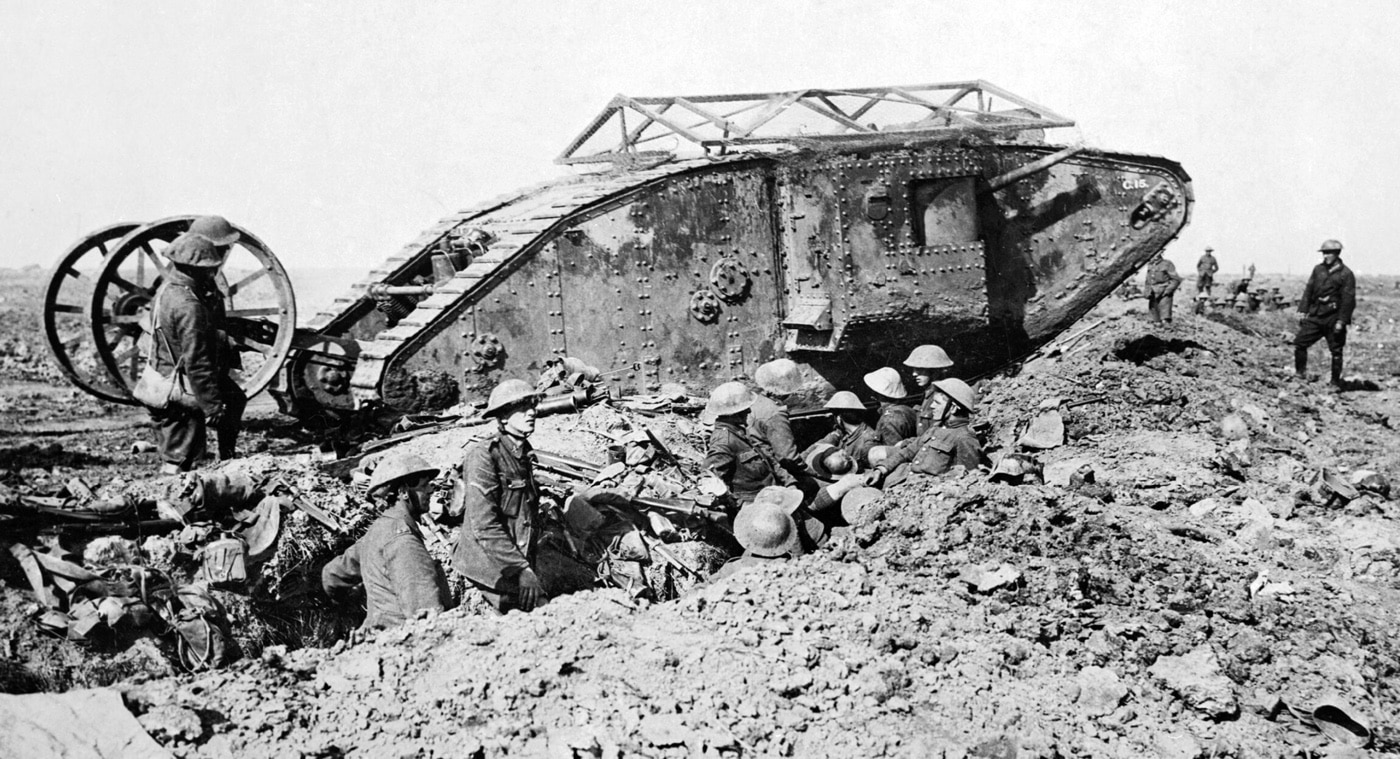
On September 25, 1916, a British Mark I tank of “C” Company broke down while crossing a trench on its way to attack Thiepval during the Battle of the Somme.
Sadly, one of many in the First World War.
After two years of bitter combat, these hardened veterans presumed they had seen it all.
The days festivities were preceded by the obligatory suffocating artillery barrage.
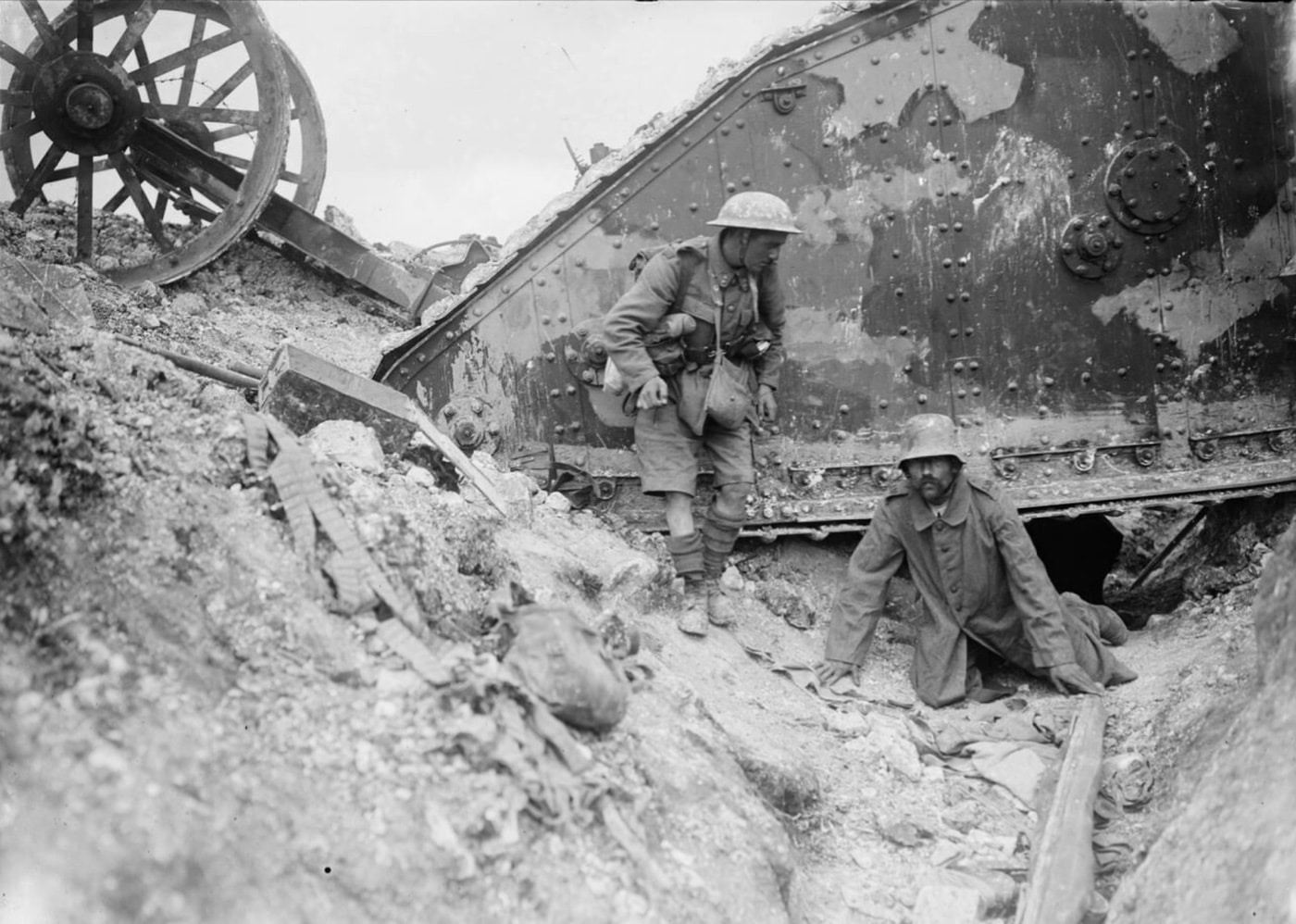
A German soldier was hiding under this abandoned Mark I tank. The tank was destroyed on the first day tanks went into action at the Battle of Flers-Courcelette on September 15, 1916.
And then the German defenders heard something else.
The sound was a deep rumble enhanced by an unnatural foreign mechanical clanking of steel on steel.
This was something fresh and new.
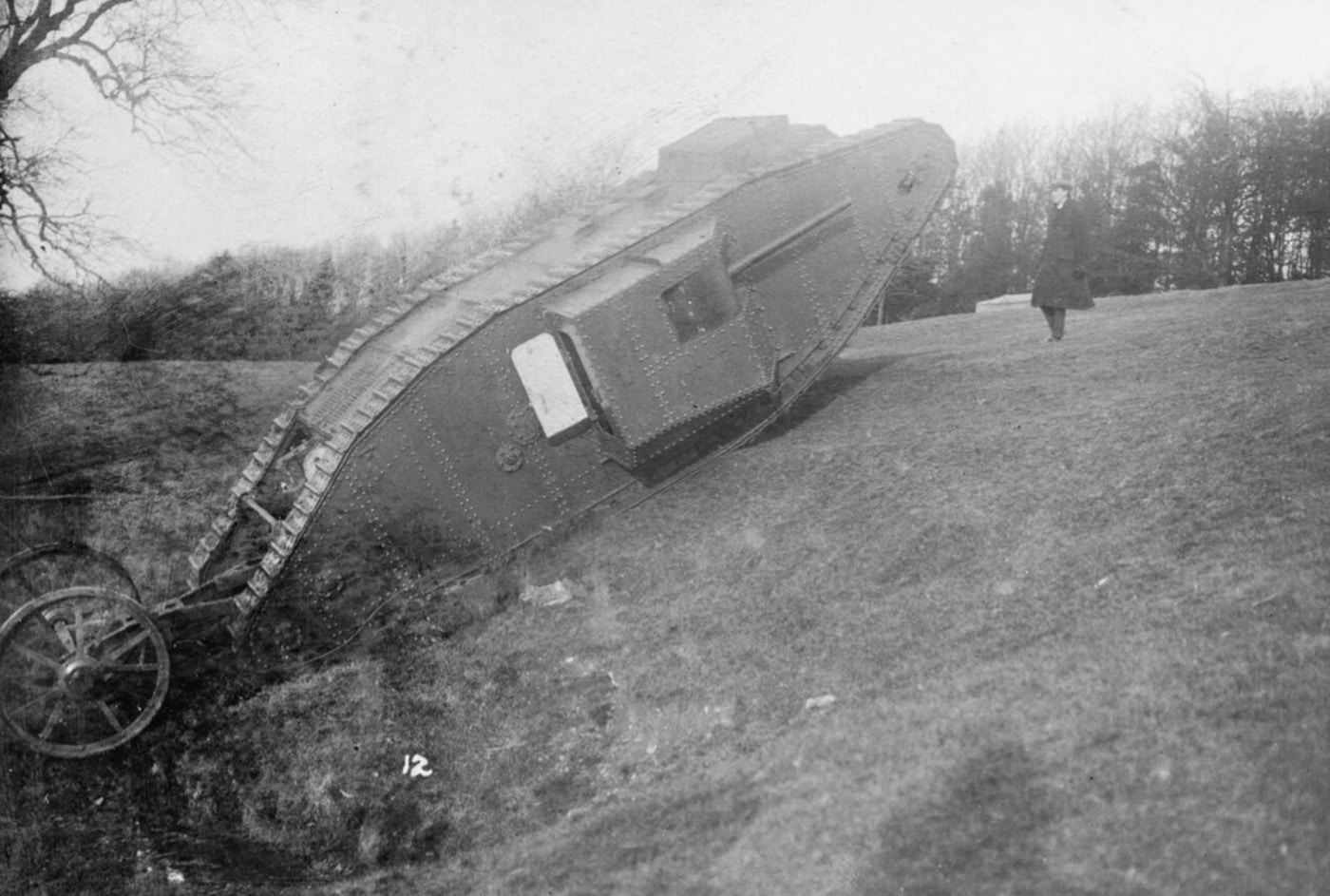
A Mark I prototype known as “Big Willie” undergoes trials on inclines. It was built by W. Foster & Co. of Lincoln in 1915 to the designs of Major Wilson and Sir W. Tritton.
Nerves already stretched to their limits threatened to snap.
Then, out of the mist, rolled the most otherworldly diabolical machines.
These horrific iron monsters did not look like human contrivances.
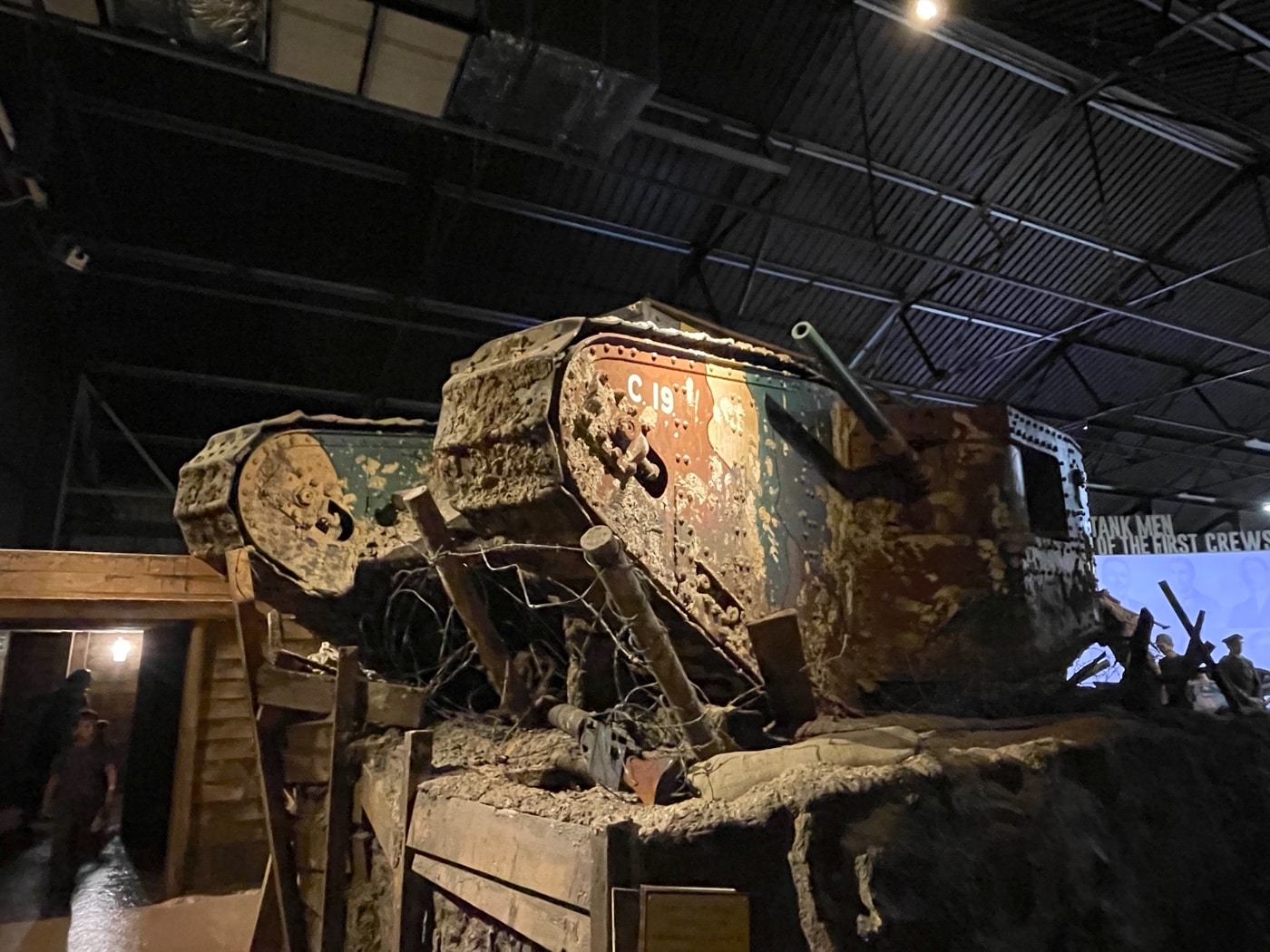
These first British tanks were produced in both Male and Female versions. The tanks would be updated during World War I for a total of 10 different Marks.
Massive steel rhomboids crept across no-mans land, crushing the copious wire obstacles like they werent there.
Rifle and machinegun fire splattered harmlessly against their armored hides.
A substantial number of these veteran German soldiers just threw down their weapons and fled.

Shown here is a prototype Mark I tank in England. This would serve as the basis for most British tank designs through the Great War.
The Kaisers First Army had just suffered its rude introduction to the modern tank.
At the end of that first day, two of the four had been destroyed.
This was indeed something both radical and revolutionary.
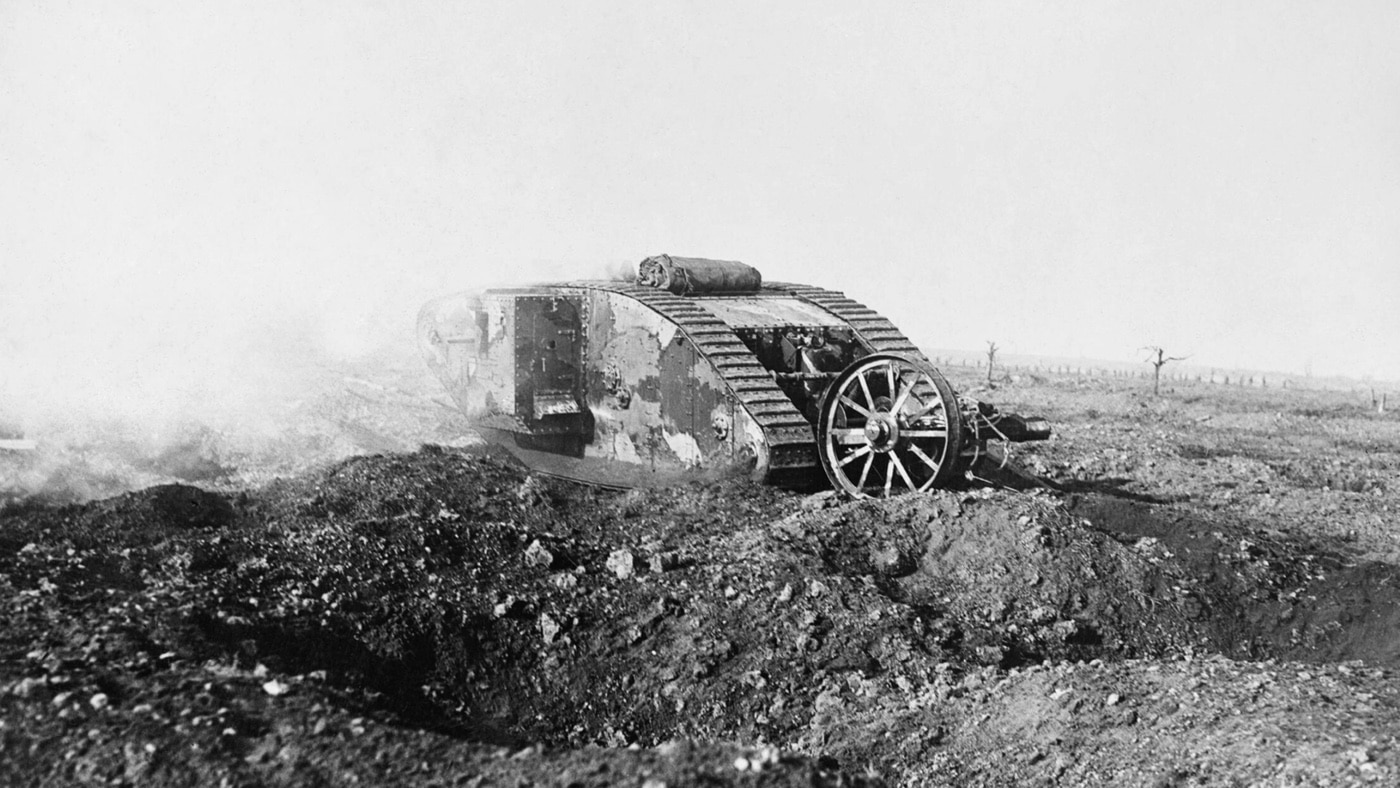
This destroyed tank was photographed in late 1916. First printed in the “Daily Mirror,” it is believed to be one of the earliest published photographs of a tank in a newspaper.
Those first armored vehicles were actually inspired by the Royal Navy.
The mission was to allow British troops to advance behind armor plate in the face of suffocating enemy fire.
Winston Churchill was an early proponent and played a critical role in their development.
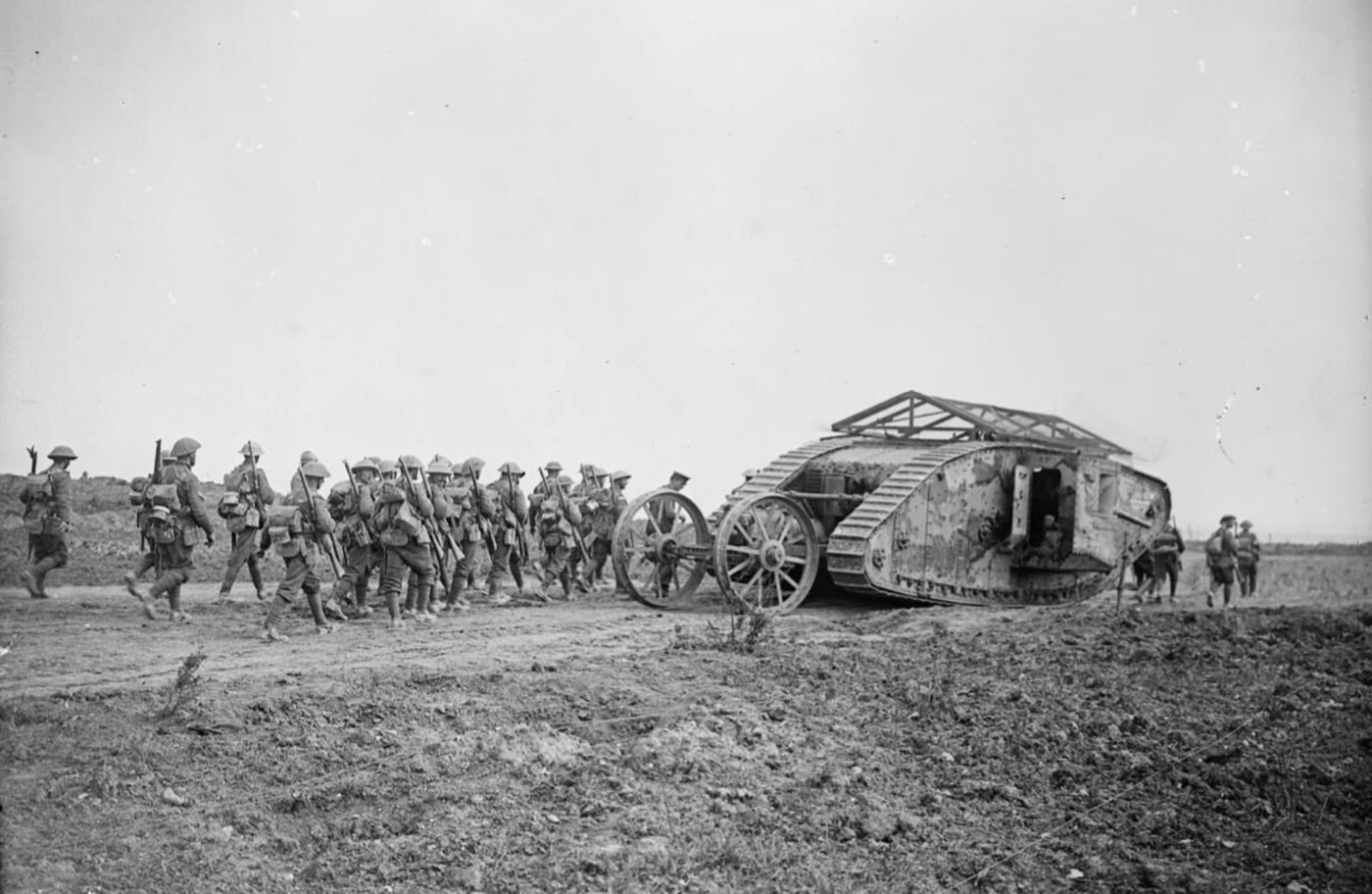
“C” Company Mark I tank, C.19 ‘Clan Leslie’, in the Chimpanzee Valley on September 15, 1916, the day tanks first went into action.
Drawing upon nautical inspirations, those first Mk Is spawned from something called the Landship Committee.
Early versions indeed seemed a bit like terrestrial warships.
It carried 50 gallons of petrol and had a maximum combat range of 23.6 miles.
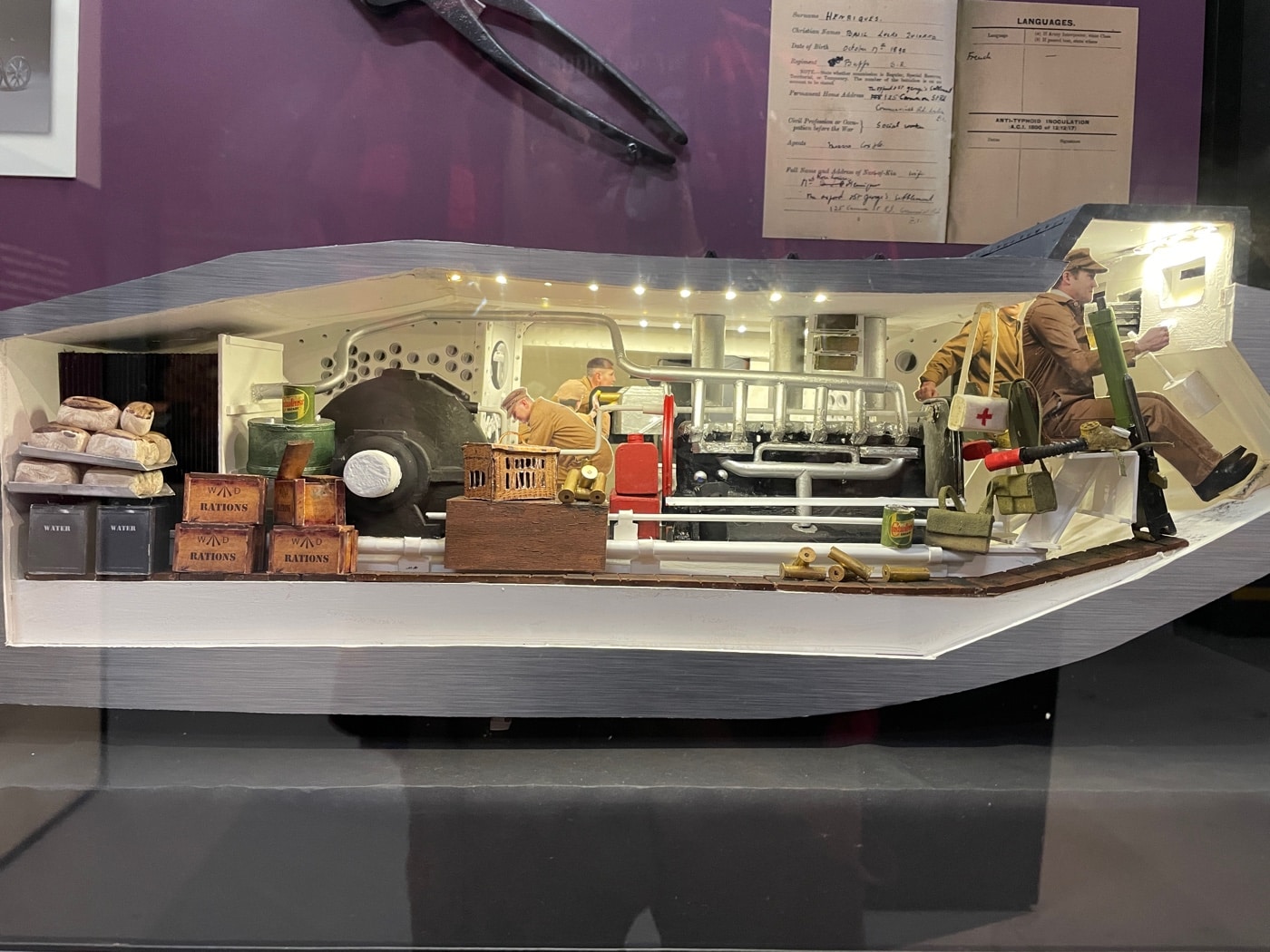
The interiors of the British tanks were laid out much like a warship. They were cramped and were not well ventilated.
Not that it mattered.
These primitive machines represented untested technology.
They broke down quite a lot.
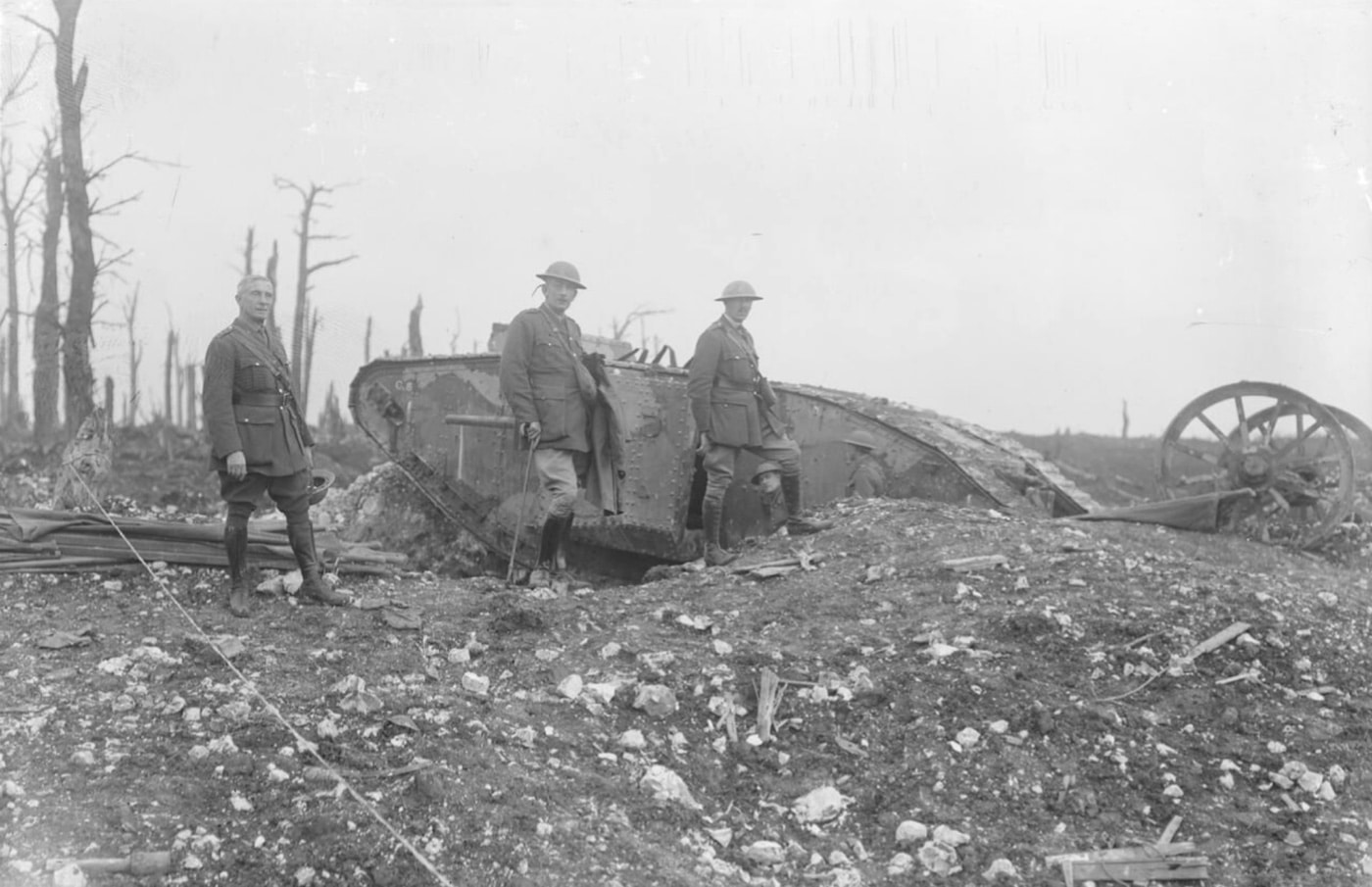
British officers view the aftermath of the first tank attack in World War I. Behind them is a derelict Mark I tank of “C” Company.
That and nobody had any clue how best to use them in action.
As a result, the tanks primary weapons were located in sponsons on each side.
Those first Mk Is came in two broad flavors.
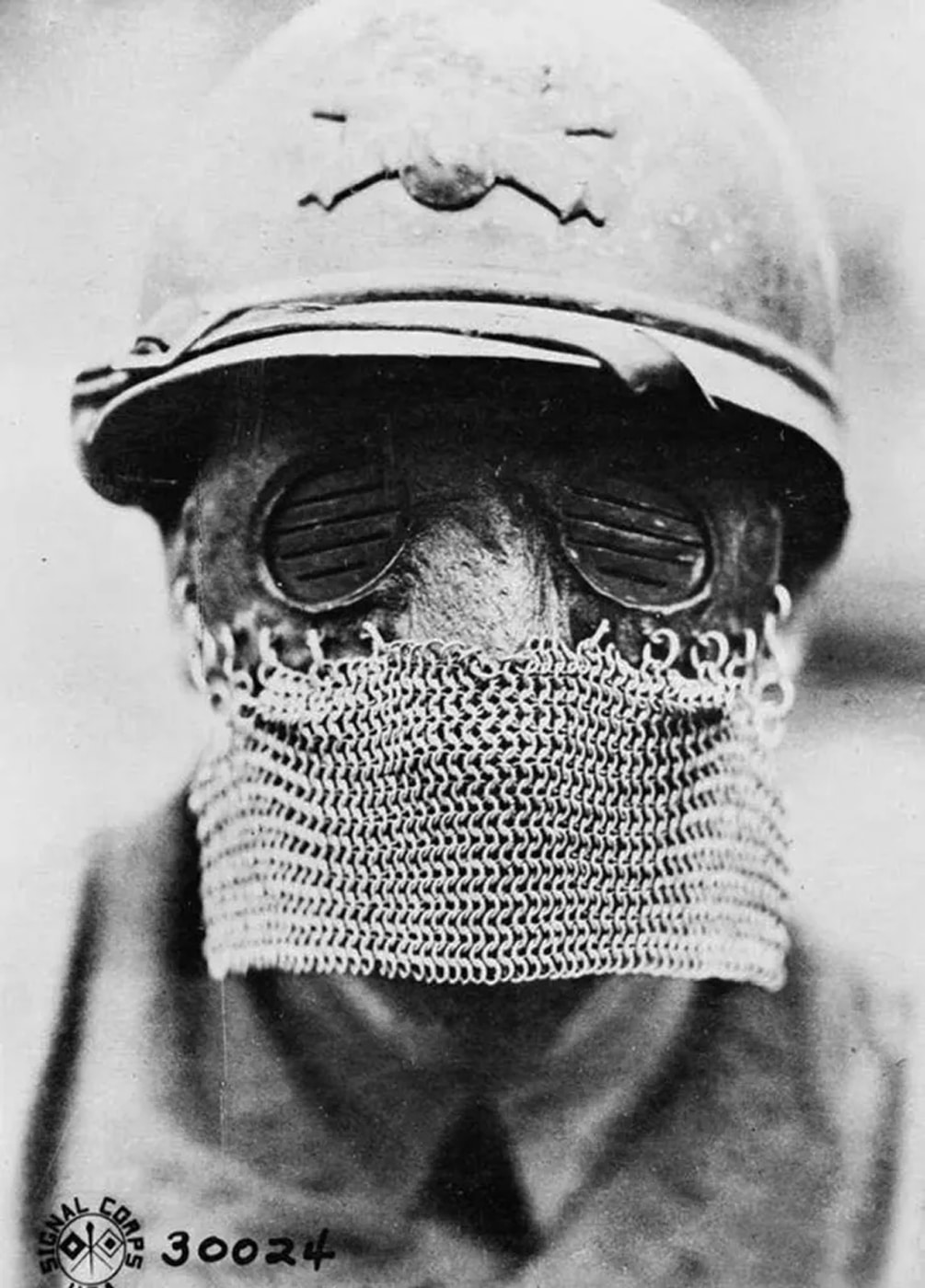
Shown here is a World War I tanker helmet designed to protect the wearer from spall inside the tank. Image: NARA
One key in dubbed the Male version featured a 6-pounder quick-firing Hotchkiss cannon both port and starboard.
The Female variant was equipped with four .303Vickers belt-fed machinegunsinstead.
Origins of the Tank Name
The name tank itself represented a nifty bit of subterfuge.
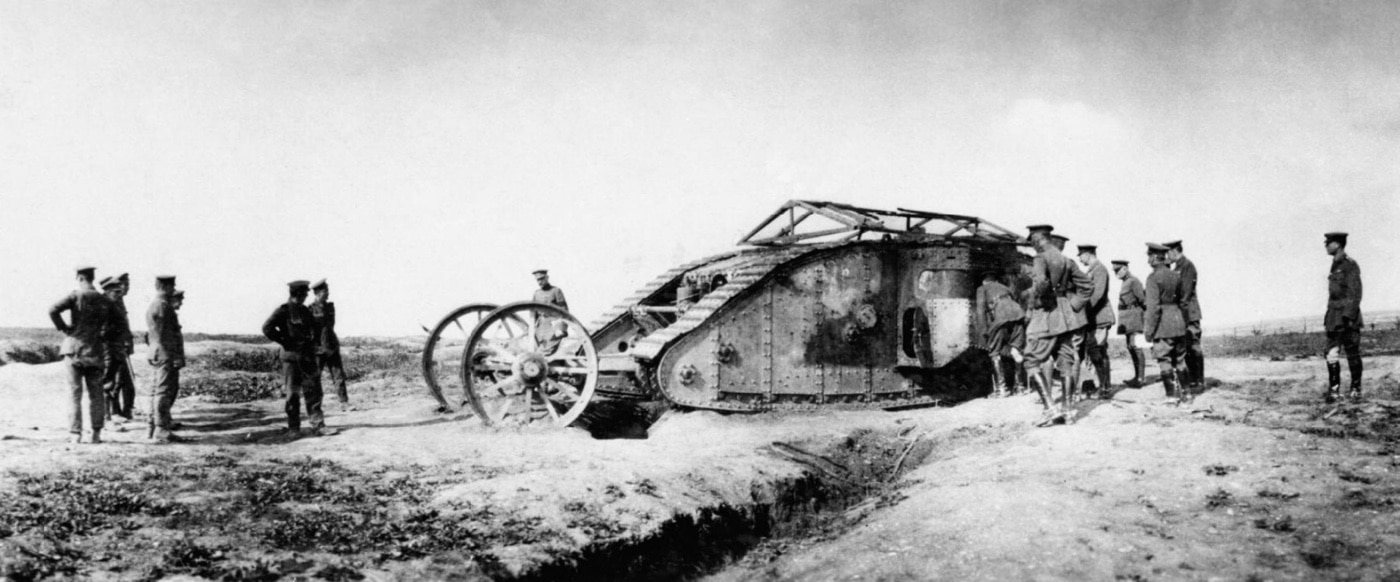
Belgian Kin Albert I inspects an abandoned Mark I tank that was knocked out during the Battle of Pozières.
The Mk I was developed in utmost secrecy.
Those closely-guarded first examples were delivered to the front under canvas covers.
When curious Tommies inquired they were told that these tarp-covered things were simply tanks.
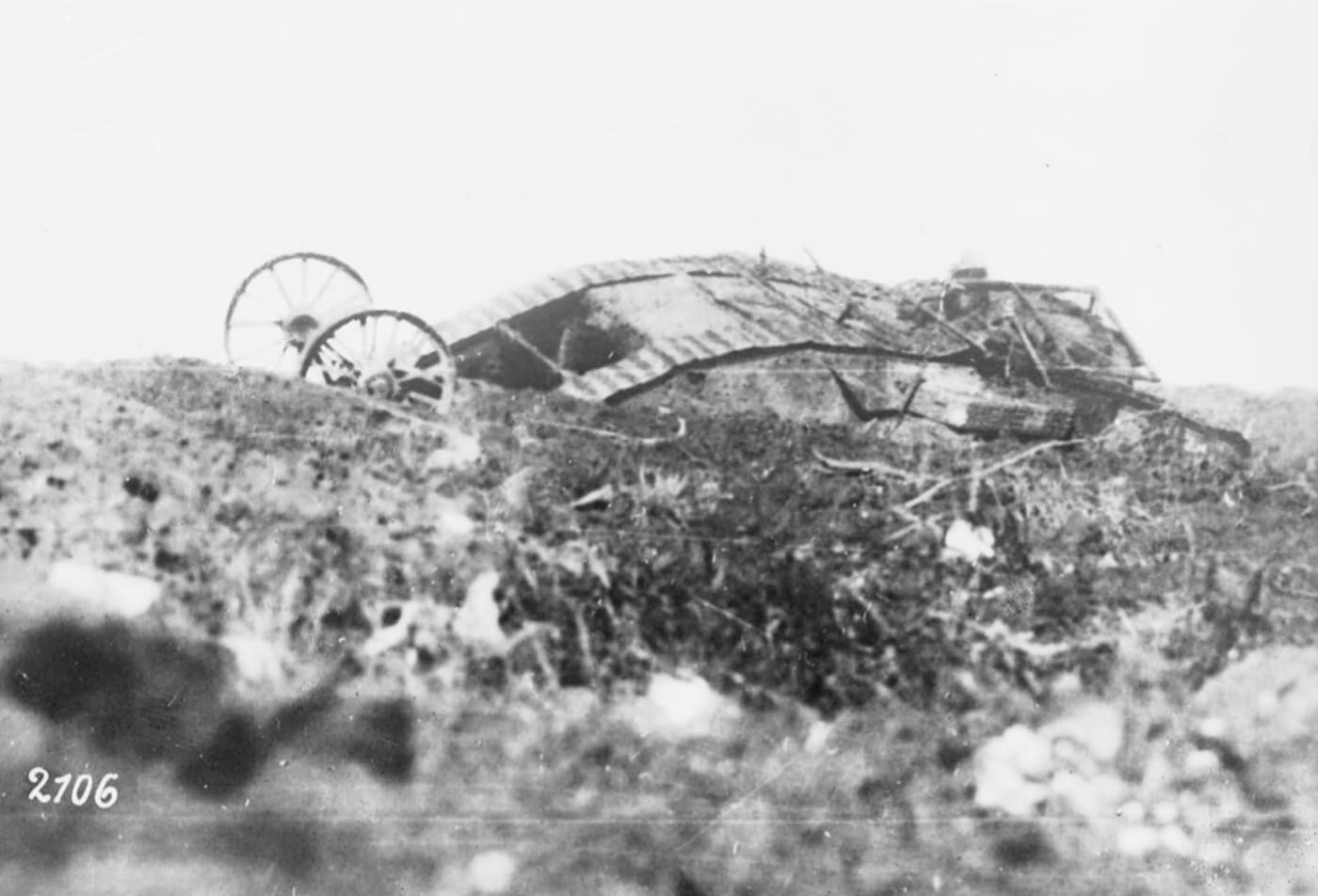
A British Mark I tank that was destroyed by a German hand grenade attack in April 1917 during the Battle of Arras.
Troopers assumed they were water tanks, but the name obviously stuck.
Mk I Tanks Pretty Crummy Duty
Mk I tanks supported a crew of eight.
The distribution of duties had that distinctive nautical flavor.
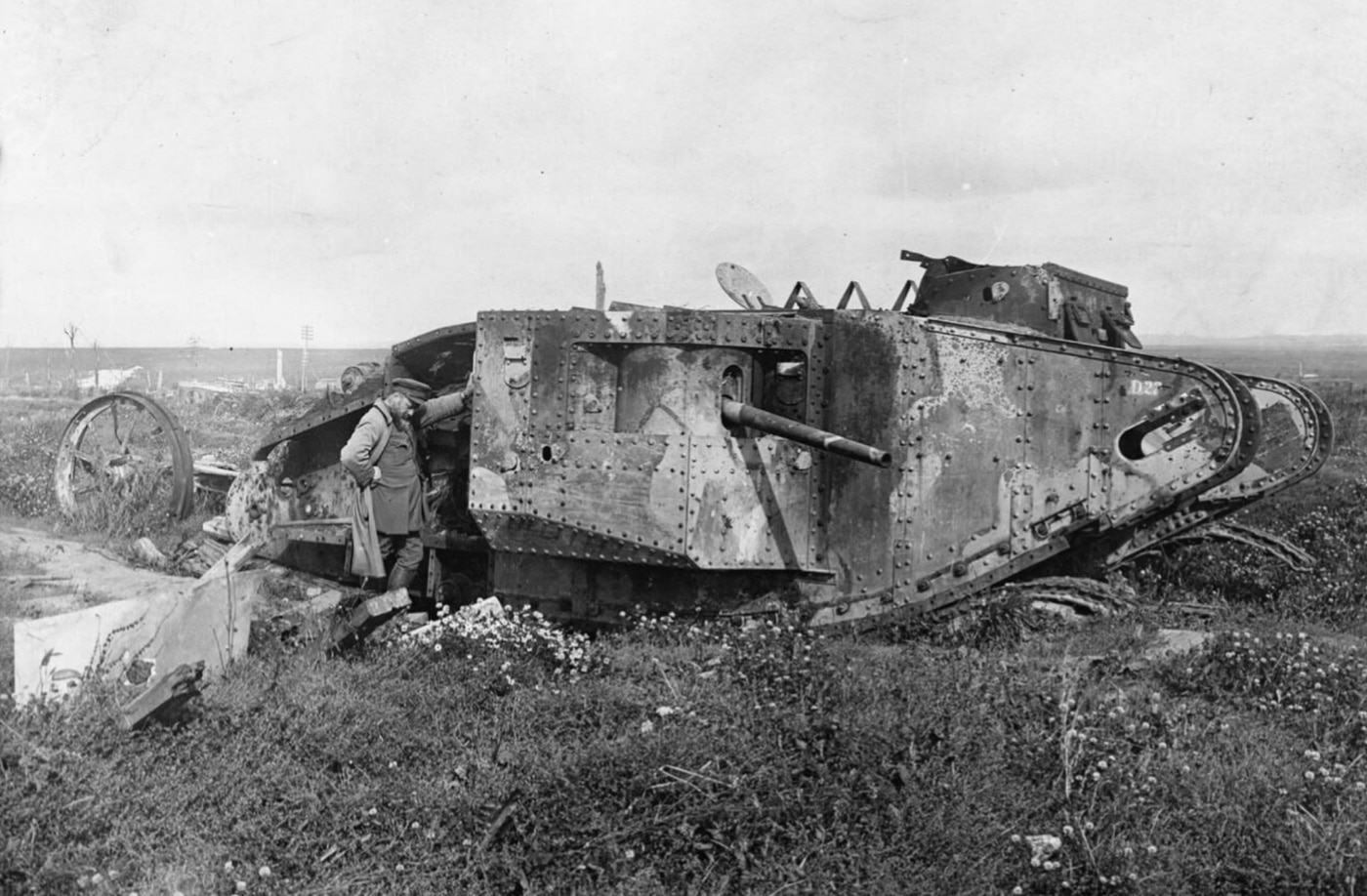
This destroyed Mark I tank of the “D” Company, Tank Corps was photographed near Courcelette in September 1917. It was knocked out in the Battle of the Somme the prior year.
There were actually two drivers, one of whom doubled as the vehicle commander.
Steering was accomplished by modulating the relative speed of each track.
There was also a massive pair of wheels that dragged behind the thing to supposedly helped sharpen turns.
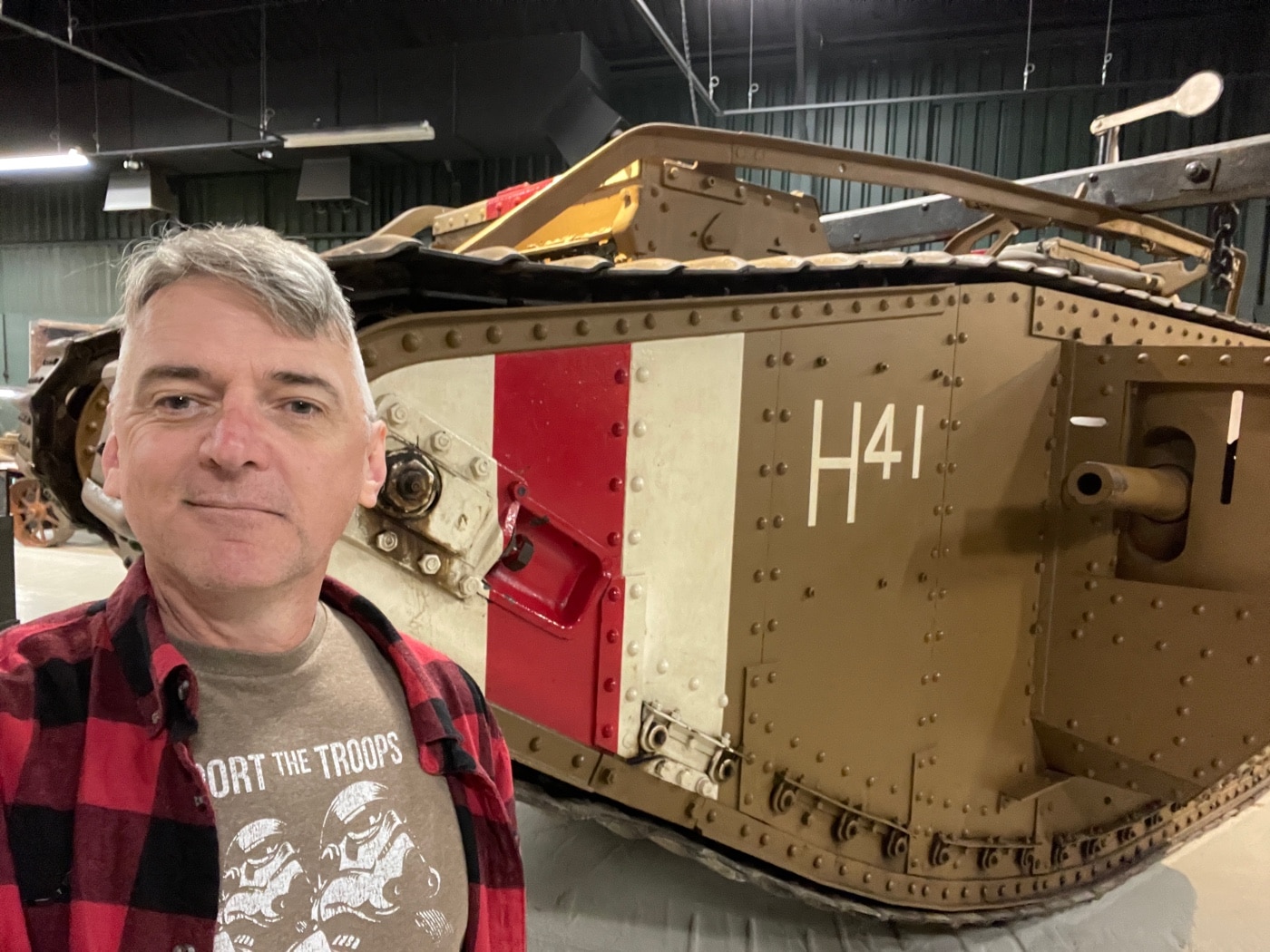
The author stands next to a British Mark V tank at The Tank Museum. Like the other versions of British tanks, the Mark V was developed from the original Mark I.
These were deleted later.
The commander/driver managed the brakes.
The other driver tended to the two-speed gearbox.

Two gearsmen had responsibility for the secondary gears for each track.
The rest of the crew operated the weapons.
Tanker Service Loud and Hot
Just driving these things was horrible.
The interior was cramped, poorly ventilated and foul.
Temperatures in action often climbed above 120 degrees F. It was also intolerably loud.
The racket and the primitive state of the art meant that radios were not practical.
Communication between vehicles was via flags, semaphore, colored discs and lanterns.
British tankers were issued with chainmail face guards to help protect their eyes from these vicious high-velocity splinters.
[Dont miss Peter Sucius article on theexperimental helmets of World War I.]
Tough But Delicate
While they were undoubtedly intimidating, these huge steel monsters were also fairly delicate.
The fuel system was gravity-fed, so the reservoirs were located high in the front of the chassis.
Shock from nearby artillery tended to rupture these tanks and flood the fighting compartment with petrol.
Dedicated salvage companies were formed to remove incinerated crews and recover damaged vehicles.
Combat Performance of the First Tanks
Military history is a predictable saga of weapons and counter-weapons.
In response to the introduction of British tanks on the battlefield, the Germans developed something they called K-bullets.
The massive 13.2mm 1918 T-Gewehr anti-tank rifle was basically an oversized Mauser bolt-action rifle firing a high-velocity hardened projectile.
German Mark I Tanks
The Brits did eventually employ tanks en masse.
So much so that large numbers were captured by the Germans and used against their previous owners.
After Cambrai, the Germans seized around 50 examples, 30 of which they restored to operational condition.
Some were used for research and display.
Others were re-equipped with German ordnance.
They eventually equipped seven full tank battalions with captured British armor.
These liberated tanks were typically painted in German splinter camouflage and adorned with Maltese crosses.
The British Mk I blazed that trail.
Go to forum thread




